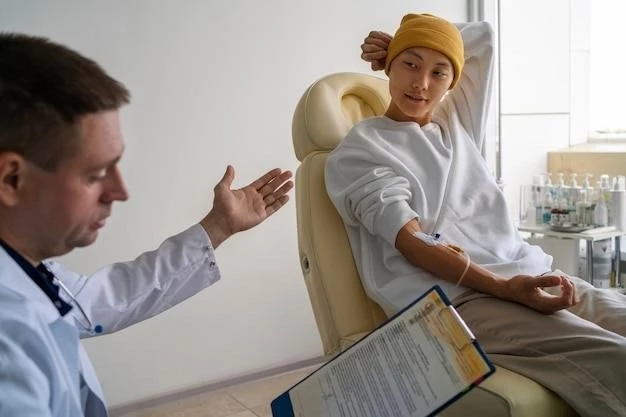Kartagener Syndrome
This article delves into Kartagener syndrome‚ a genetic disorder also known as Primary Ciliary Dyskinesia‚ impacting respiratory health with features like chronic sinusitis‚ male infertility‚ and situs inversus. It explores diagnosis through genetic testing and treatment via a multidisciplinary approach.
Introduction to Kartagener Syndrome
Kartagener syndrome‚ also termed Primary Ciliary Dyskinesia‚ is a rare genetic disorder with an autosomal recessive inheritance pattern. It affects ciliary motility‚ leading to respiratory issues‚ sinus problems‚ and male infertility. Patients might exhibit situs inversus totalis‚ where their major organ positioning is mirrored. The hallmark feature is dysfunctional cilia‚ impairing mucociliary clearance and predisposing individuals to recurrent respiratory infections.
Understanding Ciliary Dyskinesia
Ciliary dyskinesia‚ a core pathology in Kartagener syndrome‚ involves impaired motility of cilia lining the respiratory tract‚ paranasal sinuses‚ and reproductive organs due to genetic mutations affecting ciliary structure or function. The dyskinetic cilia are unable to effectively clear mucus and foreign particles‚ predisposing individuals to recurrent infections and inflammation. This dysfunction contributes to the diverse clinical manifestations observed in Kartagener syndrome‚ highlighting the central role of ciliary function in maintaining respiratory and reproductive health.
Overview of Primary Ciliary Dyskinesia (PCD)
Primary Ciliary Dyskinesia (PCD) represents a subgroup of ciliopathies‚ including Kartagener syndrome‚ characterized by defective ciliary structure and function. It results from genetic mutations affecting ciliary motility‚ impairing mucociliary clearance mechanisms. PCD manifests as recurrent respiratory infections‚ chronic sinusitis‚ and bronchiectasis. The diagnosis involves specialized testing to assess ciliary motion and genetic analysis for confirmation. A multidisciplinary approach is crucial for managing PCD‚ focusing on symptom control and reducing complications.
Clinical Features and Symptoms
Kartagener syndrome presents with a spectrum of clinical features and symptoms primarily affecting the respiratory and reproductive systems. Patients commonly experience chronic respiratory infections‚ chronic sinusitis‚ and bronchiectasis due to impaired mucociliary clearance. Male infertility is prevalent‚ attributed to sperm immotility. Situs inversus‚ where major organs are mirrored in position‚ can also occur. Other manifestations include chronic cough‚ recurrent ear infections‚ and nasal polyps. Early recognition and management of these symptoms are vital in enhancing the quality of life for individuals with Kartagener syndrome.
Impact on Respiratory Health
Kartagener syndrome exerts a significant impact on respiratory health‚ primarily due to dysfunctional cilia impairing mucociliary clearance. This impairment predisposes individuals to recurrent respiratory infections‚ chronic sinusitis‚ and bronchiectasis. The compromised airway clearance mechanisms lead to the accumulation of mucus‚ bacteria‚ and debris in the respiratory tract‚ resulting in chronic inflammation and respiratory symptoms such as cough‚ wheezing‚ and shortness of breath. Timely intervention and comprehensive respiratory care are essential to manage the respiratory manifestations of Kartagener syndrome and improve overall lung function.
Association with Chronic Sinusitis
Chronic sinusitis is a common manifestation of Kartagener syndrome‚ attributed to dysfunctional cilia leading to impaired mucociliary clearance in the paranasal sinuses. This condition predisposes individuals to recurrent sinus infections‚ facial pain‚ nasal congestion‚ and post-nasal drip. The chronic inflammation of the sinuses can significantly impact the quality of life‚ causing discomfort and affecting daily activities. Management of chronic sinusitis in Kartagener syndrome involves a combination of medical treatments‚ such as nasal saline irrigation‚ antibiotics‚ and sometimes surgical interventions to alleviate symptoms and prevent complications.
Link to Male Infertility
Kartagener syndrome is associated with male infertility‚ primarily due to immotile sperm resulting from ciliary dysfunction in the reproductive tract. The impaired ciliary movement hinders the propulsion of sperm‚ leading to reduced fertility or infertility. Additionally‚ the abnormal development of sperm tails further contributes to the challenges in achieving successful fertilization. Assisted reproductive techniques such as in vitro fertilization (IVF) with intracytoplasmic sperm injection (ICSI) may be utilized to overcome the fertility issues associated with Kartagener syndrome‚ offering affected individuals the possibility of parenthood.
Rare Presentation⁚ Situs Inversus

Situs inversus is a rare but distinctive presentation associated with Kartagener syndrome‚ where the positioning of major organs in the chest and abdomen is reversed from their normal anatomical arrangement. This mirror-image orientation results from abnormalities during embryonic development‚ often linked to ciliary dysfunction. Situs inversus totalis‚ involving complete organ reversal‚ is more prevalent in individuals with Kartagener syndrome. While typically asymptomatic‚ situs inversus can complicate medical procedures and diagnoses due to the atypical organ placement. Awareness of this rare presentation is essential for healthcare providers managing patients with Kartagener syndrome.
Complications⁚ Bronchiectasis
Bronchiectasis is a significant complication associated with Kartagener syndrome‚ characterized by the abnormal widening and scarring of the airways in the lungs. The impaired airway clearance mechanisms due to dysfunctional cilia predispose individuals with Kartagener syndrome to recurrent respiratory infections‚ leading to chronic inflammation and damage to the bronchial walls over time. Bronchiectasis presents with symptoms such as chronic cough‚ sputum production‚ and recurrent chest infections. Early detection and management of bronchiectasis in Kartagener syndrome are crucial to prevent disease progression‚ minimize respiratory exacerbations‚ and preserve lung function.
Genetics of Kartagener Syndrome
Kartagener syndrome is primarily an autosomal recessive genetic disorder‚ with mutations affecting genes responsible for ciliary structure and function. These genetic abnormalities disrupt the coordinated movement of cilia‚ leading to impaired mucociliary clearance and respiratory complications. Commonly implicated genes in Kartagener syndrome include DNAH5‚ DNAI1‚ and CCDC39. Genetic testing plays a pivotal role in diagnosing Kartagener syndrome by identifying specific gene mutations. Understanding the genetic basis of the condition not only aids in diagnosis but also guides genetic counseling for affected individuals and their families regarding the inheritance pattern and potential risks.
Diagnosis and Genetic Testing
Diagnosing Kartagener syndrome involves a comprehensive evaluation of clinical symptoms‚ imaging studies‚ and specialized tests to assess ciliary function. High-speed video microscopy and nasal nitric oxide measurement are instrumental in evaluating ciliary motion and function. Genetic testing plays a crucial role in confirming the diagnosis by identifying mutations in genes associated with ciliary dysfunction. This testing not only aids in the accurate diagnosis of Kartagener syndrome but also helps determine the inheritance pattern‚ providing valuable information for affected individuals and their families. A multidisciplinary approach involving pulmonologists‚ geneticists‚ and otolaryngologists is essential for the accurate diagnosis and management of Kartagener syndrome.
Treatment Strategies and Multidisciplinary Approach
The management of Kartagener syndrome involves a multidisciplinary approach aimed at addressing the diverse clinical manifestations and complications associated with the condition. Treatment strategies focus on optimizing respiratory health through airway clearance techniques‚ such as chest physiotherapy and nebulized therapies‚ to assist in mucus clearance. Antibiotics are prescribed to manage recurrent infections‚ while corticosteroids and other anti-inflammatory medications help alleviate respiratory symptoms. Surgical interventions may be necessary in cases of severe sinus disease or bronchiectasis. Additionally‚ fertility treatments like assisted reproductive techniques are available for individuals experiencing male infertility. Genetic counseling is essential to provide affected individuals and their families with information on the genetic aspects of the condition and potential risks in future generations. Collaborative care involving pulmonologists‚ otolaryngologists‚ geneticists‚ and fertility specialists is vital in ensuring comprehensive and personalized management of Kartagener syndrome.
